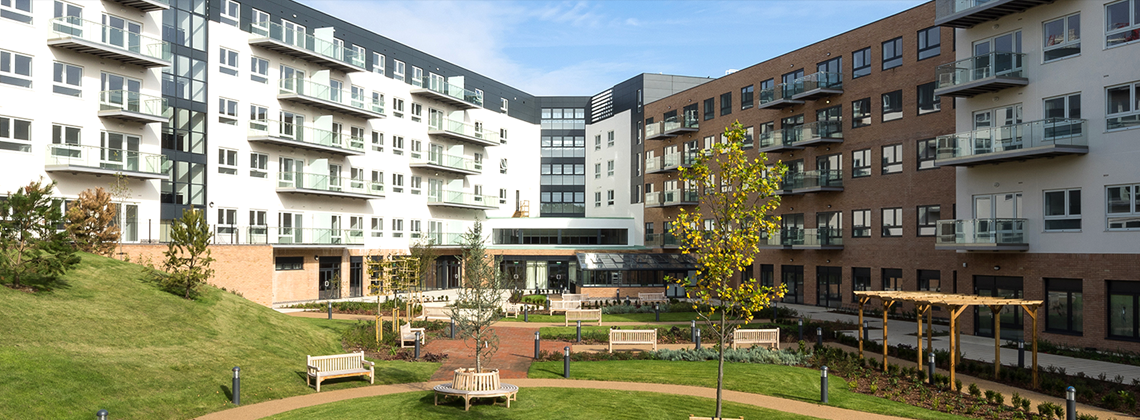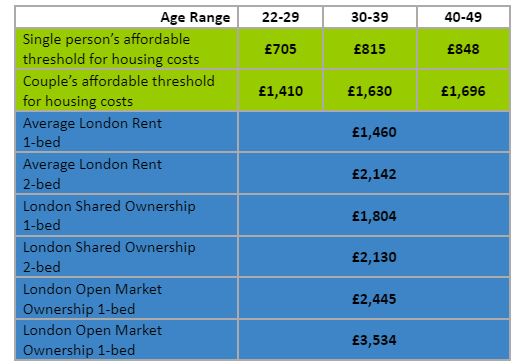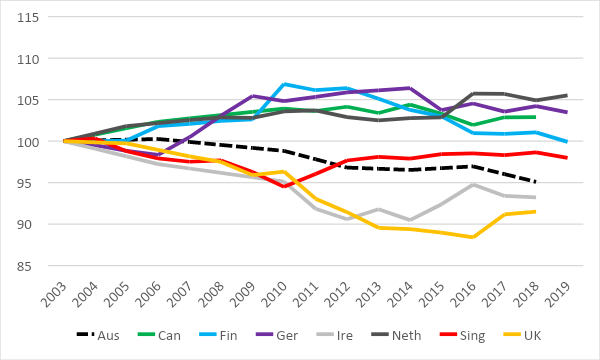A Manifesto for Solving the UK Housing Crisis with Factory-Built
Housing
The UK faces a critical housing crisis characterised by unaffordable rents,
unattainable homeownership, and a house building sector that is too slow to deliver the 1.5 million homes that have been promised. This crisis damages communities and requires a bold, innovative solution. This proposal outlines a plan to revolutionise house building in the UK by embracing cutting-edge factory-built housing technology.
Vision:
The vision is a nation where everyone has access to a secure, affordable, and high-quality home. Factory-built housing is believed to be key to achieving this vision.
The Factory-Built Housing Solution:
Factory-built housing offers a proven approach with significant advantages:
- Speed and Scale: Mirroring the efficiency of car manufacturing, factory-built homes can be produced rapidly and at scale. Existing factories, such as those in China with capacities of 10,000 sq metres of housing per day, per factory, demonstrate the potential to meet the UK’s housing needs. This proposal advocates for strategic partnerships to bring this capacity to bear on the UK housing shortage, delivering homes at an unprecedented pace.
- Affordability: Streamlined factory production and rapid on-site assembly significantly reduce construction costs, translating to lower purchase prices and rents. Furthermore, the design of these homes prioritises ultra-low energy consumption, reducing ongoing running costs for residents.
- Quality: Precision manufacturing ensures consistent, high-quality builds, often exceeding the standards of traditional construction. This proposal champions homes built to last, designed for modern living. Award-winning architectural designs, capable of on-site assembly in as little as 24 hours, illustrate the potential of this approach
- Sustainability: Factory-built homes are inherently designed with sustainability in mind. The use of eco-friendly materials and the integration of energy-efficient technologies contribute significantly to achieving the UK’s environmental targets.
- Flexibility: Modular designs offer unparalleled flexibility. Homes can be easily reconfigured or even disassembled and reused, adapting to evolving needs and minimising waste.
Action Plan:
To realise this vision, this proposal recommends the following key actions:
- Investment in Factory-Built Housing Infrastructure: This proposal calls for strategic investment in developing UK-based factory capacity and streamlining planning processes to facilitate the rapid deployment of factory-built homes.
- Partnerships with International Leaders: Collaboration with established factory-built housing providers is crucial to leverage existing expertise and capacity, ensuring a swift and effective response to the housing crisis.
- Prioritisation of Quality and Design: This proposal champions innovative, award-winning designs that create vibrant and sustainable communities.
- Ensuring Affordability: Implementation of measures to ensure that cost savings achieved through factory-built housing are passed on to residents, making homeownership and affordable renting a reality for all, is a core component of this plan.
Conclusion:
Factory-built housing represents not just a solution to the housing crisis, but an opportunity to build a better future. This proposal offers a pathway to a future where everyone has a safe, affordable, and sustainable place to call home.
By Eamonn Gabriel
Time to plan for the Budget in Autumn 2025
The dust is starting to settle on the 2024 Budget and if it’s possible to generalise across the spectrum of reactions, it’s probably “a good start but not enough to address even the most acute problems of poverty and inequality – there is still a long way to go”.
There were welcome steps towards addressing wealth inequality with the changes to Capital Gains Tax and Inheritance tax, ending Non-Doms Status, VAT on private schools and increasing the tax on private jet travellers. We now need to call for all unearned wealth to be taxed at the same rate as earned income. We should also open a debate on how best to replace the regressive Council Tax with a fairer system.
The two main contenders are a Proportional Property Tax (PPT) and a Land Value Tax (LVT). Some favour PPT e.g. the IPPR and Fairer Share, while others such as Martin Wolf, Chief Economist at the Financial Times and the Mayor of Greater Manchester, Andy Burnham spell out the merits of LVT.
Importantly, the liability for payment of both these taxes lies with the owner not the tenant.
Labour Housing Group is well placed to promote this debate, raise awareness of the unfairness of Council Tax, and encourage the Government to initiate a public consultation in advance of the Budget in 2025.
Jacky Peacock, OBE, is the Chair of Advice for Renters and writes in a personal capacity.
Building the affordable homes we need
Dear Red Brick editors and readers,
I am not going to spend any time in this letter on why we desperately need more affordable homes. We are all aware of the statistics on housing waiting lists, levels of homelessness, children sharing beds with siblings, and the impact of housing costs within the cost-of-living crisis. That is why Labour’s manifesto was clear, “Labour will deliver the biggest increase in social and affordable housebuilding in a generation”. So the simple question is how?
First, the Government needs to confirm a long term, 10-year, rent settlement for Registered Providers (social and affordable housing landlords). Only then can they plan and borrow for investment. The immediate increase in borrowing capacity will free Registered Providers to bid on the heavily subsidised affordable housing provided by private developers through their s.106 planning obligations. At present, this is not happening. This limits not only the delivery of affordable housing, but that of private housing as well. This is an urgent issue and needs to be resolved now.
Second, as the Government is proposing, it needs to urgently reform the planning system to ensure that all local authorities in the country have a plan to deliver the homes they need. By 2025, 78% of Local Authorities in England will not have an up-to-date Local Plan, and 38% will have a Plan that is 10 years old or more. What does this mean for affordable housing delivery? A few extreme illustrations of authorities with high percentages of green belt and their record of affordable home building might help. York has not had a Local Plan since 1954 and built a total of 3,329 homes in the 5 years to 31 March 2022. However, after accounting for Right to Buy loses, only a net 9% of those homes were ‘affordable’. Brentwood, over the same period, delivered a total of 1,394 new homes of which a net 8% were affordable. There are more examples that could be given, but let us be clear that in these areas, and many more, local authorities are not meeting their total housing requirements and certainly are not delivering the affordable homes we so desperately need.
Third, within the planning reforms, government needs to over-emphasise the importance of affordable housing delivery while ensuring that planning authorities bring forward the right mix of sites. We all agree that brownfield sites should be considered as a priority for development, but in many locations outside of London, the costs — such as for remediation, and construction — of developing brownfield sites means that they do not deliver the expected and necessary levels of affordable housing. Take Birmingham, in that 5-year period I referred to above, a total of 17,800 new homes were built. Yet after Right to Buy Registered Providers lost a net 994 affordable homes from their stock. You need to ensure that there are enough sites, effectively green field (not to be confused with Green Belt, but perhaps those as well, certainly Grey Belt!), being developed that can deliver the targeted level of affordable housing. There need to be checks and balances to ensure that local authorities are doing this.
Fourth, social rent needs greater emphasis among affordable housing requirements. Definitions and emphasis changed under the previous Conservative administration. In 2012, they changed the emphasis in grant funding and financial policy away from social rent (those homes with rents set at around 50% of market rents) to affordable rent (around 80% of market rent) in an austerity measure to lessen funding of affordable housing. While affordable rent might address part of the need for affordable housing, it should only be viewed as a piece of a larger jigsaw. We need to bring back social rent within the delivery mix. This change has been further accentuated by Right to Buy losses as I have illustrated above. There needs to be greater flexibility in what defines affordable housing, but one thing is surely clear, that social rent should begin to once again play a greater part in delivery in many areas. When I started in development over 20 years ago, the starting point was that social rent formed a large percentage of the affordable housing s.106 obligation on sites. We need to return to a point where planning policy sets a minimum percentage of social rent within the affordable mix. We should also be willing to accept other forms of affordable housing such as discounted market sales or rent to buy. The need is not uniform across the country, just as development viabilities are not, so there needs to be greater flexibility as to what is accepted.
Finally, I would like to challenge the Treasury. Affordable housing delivery should be considered as an investment in national infrastructure. We spend £31bn annually on housing benefit. Surely, a logical case can be made to commence a programme of government-led investment in affordable housing without viewing it as current account expenditure of the nation. We will have an asset, we may eventually reduce our housing benefit bill, it will lead to benefits for the wider economy – health outcomes, educational outcomes, social and labour market mobility – it would aid economic growth, improving fairness and creating opportunity.
With Labour’s attention on immediate planning reform, its focus on economic growth and delivering more homes of all tenures, and with a willing development industry ready to deliver, bridging the gap in affordable housing delivery is achievable.
Paul Brocklehurst is Chair of the Land, Planning and Development Federation
















